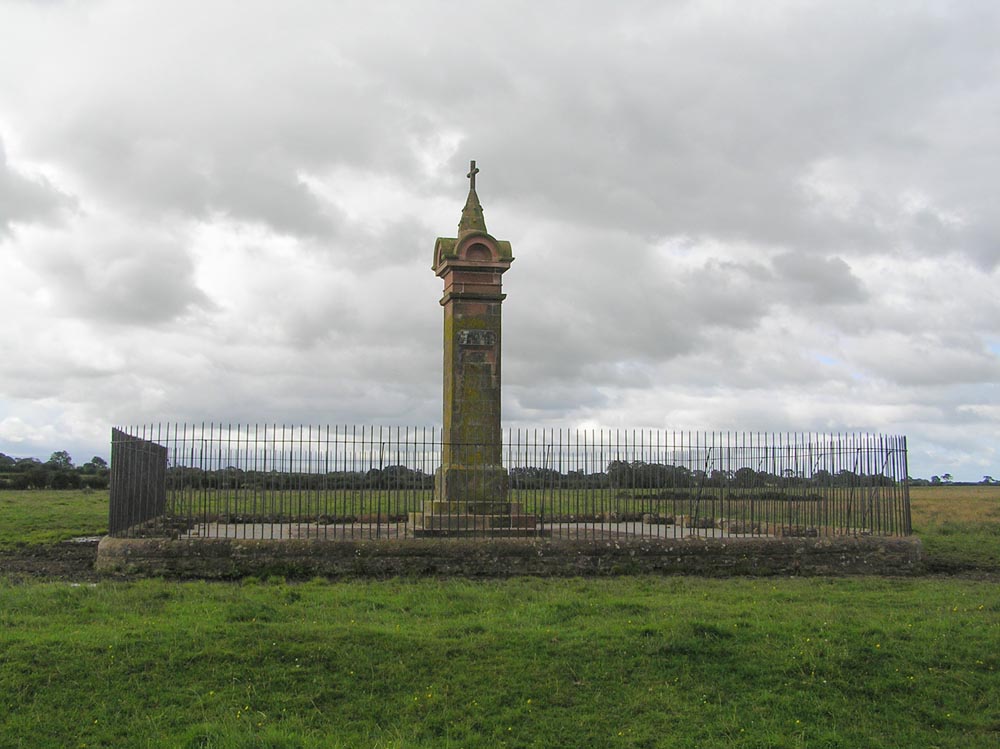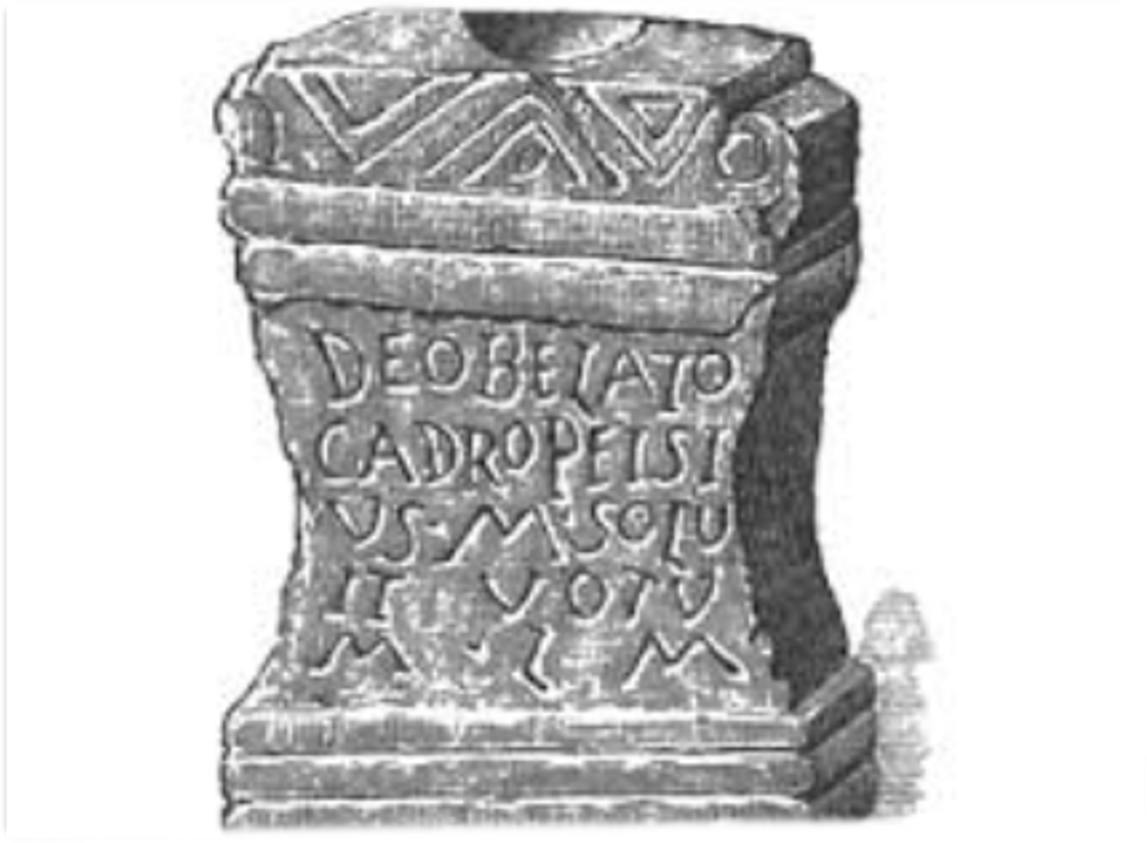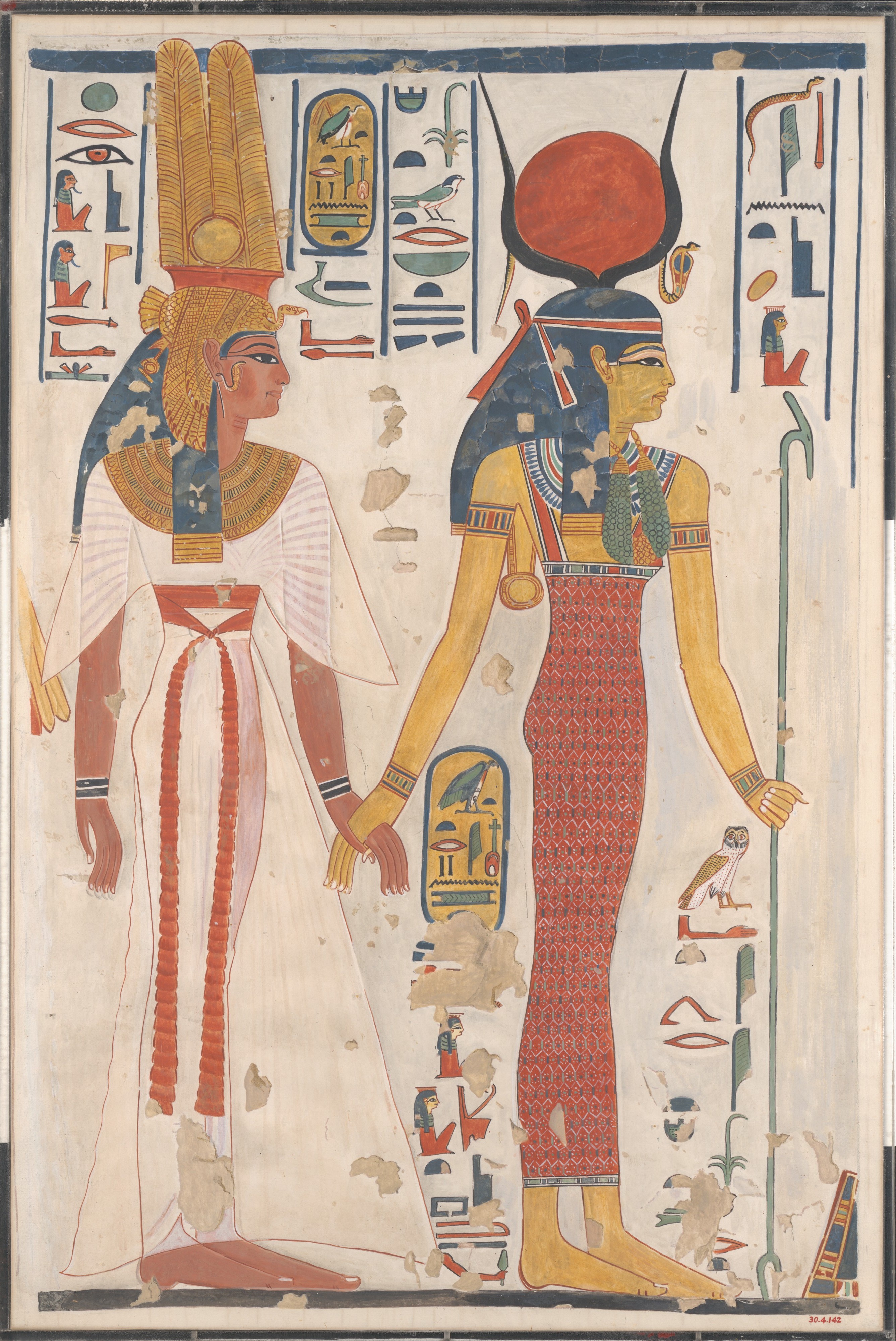|
Dea Latis
__NOTOC__ In ancient Celtic polytheism, Latis is the name of two Celtic polytheism, Celtic deities worshipped in Roman Britain. One is a goddess (Dea Latis), the other a god (Deus Latis), and they are both known from a single inscription each. Dea Latis The dedication to Dea Latis was found at Banna (Birdoswald), Birdoswald Roman Fort in Cumbria, England, in 1873. It reads simply: The E is written as a , , . The stone is now in the Carlisle Museum. She may have been associated with the nearby rivers. Deus Latis The dedication to Deus Latis, recovered on an altar-stone at the Roman fort of Aballava, Burgh-by-Sands (also in Cumbria) reads: The altar-stone to Deus Latis was found near an image of a horned god and another dedication to the god Belatucadros. Etymology The name 'Latis' may conceivably be related to the Proto-Celtic language, Proto-Celtic words *''lati-'' meaning 'liquor', *''lat-'' 'day', or *''lāto-'' 'lust'.Centre for Advanced Welsh and Celtic Studies, Universi ... [...More Info...] [...Related Items...] OR: [Wikipedia] [Google] [Baidu] |
Celtic Polytheism
Ancient Celtic religion, commonly known as Celtic paganism, was the religion of the ancient Celts, Celtic peoples of Europe. Because there are no extant native records of their beliefs, evidence about their religion is gleaned from archaeology, Greco-Roman accounts (some of them hostile and probably not well-informed), and literature from the early Christian period.Miranda Aldhouse-Green, Green, Miranda (2012). "Chapter 25: The Gods and the supernatural", ''The Celtic World''. Routledge. pp.465–485 Celtic paganism was one of a larger group of polytheistic Indo-European religion, Indo-European religions of Iron Age Europe. While the List of Celtic deities, specific deities worshipped varied by region and over time, underlying this were broad similarities in both Celtic deities, deities and "a basic religious homogeneity" among the Celtic peoples. Widely worshipped Celtic gods included Lugus, Toutatis, Taranis, Cernunnos, Epona, Maponos, Belenos, and Sucellos. Sacred springs we ... [...More Info...] [...Related Items...] OR: [Wikipedia] [Google] [Baidu] |
Roman Britain
Roman Britain was the territory that became the Roman province of ''Britannia'' after the Roman conquest of Britain, consisting of a large part of the island of Great Britain. The occupation lasted from AD 43 to AD 410. Julius Caesar invaded Britain in 55 and 54 BC as part of his Gallic Wars. According to Caesar, the Britons had been overrun or culturally assimilated by the Belgae during the British Iron Age and had been aiding Caesar's enemies. The Belgae were the only Celtic tribe to cross the sea into Britain, for to all other Celtic tribes this land was unknown. He received tribute, installed the friendly king Mandubracius over the Trinovantes, and returned to Gaul. Planned invasions under Augustus were called off in 34, 27, and 25 BC. In 40 AD, Caligula assembled 200,000 men at the Channel on the continent, only to have them gather seashells () according to Suetonius, perhaps as a symbolic gesture to proclaim Caligula's victory over th ... [...More Info...] [...Related Items...] OR: [Wikipedia] [Google] [Baidu] |
Banna (Birdoswald)
Birdoswald Roman Fort was known as ''Banna'' ("peak, horn" in Celtic) in Roman times, reflecting the geography of the site on a triangular spur of land bounded by cliffs to the south and east commanding a broad meander of the River Irthing in Cumbria below. It lies towards the western end of Hadrian's Wall and is one of the best preserved of the 16 forts along the wall. It is also attached to the longest surviving stretch of Hadrian's Wall. Cumbria County Council were responsible for the management of Birdoswald fort from 1984 until the end of 2004, when English Heritage assumed responsibility. History This western part of Hadrian's Wall was originally built using turf starting from 122 AD. The stone fort was built some time after the wall, in the usual playing card shape, with gates to the east, west and south. It was 7.5 miles east from Camboglanna (Castlesteads) fort and 6.5 miles from Aesica (Great Chesters). The fort was occupied by Cohors I Aelia Dacorum and by o ... [...More Info...] [...Related Items...] OR: [Wikipedia] [Google] [Baidu] |
Cumbria
Cumbria ( ) is a ceremonial county in North West England. It borders the Scottish council areas of Dumfries and Galloway and Scottish Borders to the north, Northumberland and County Durham to the east, North Yorkshire to the south-east, Lancashire to the south, and the Irish Sea to the west. Its largest settlement is the city of Carlisle. Cumbria is predominantly rural, with an area of and a population of 500,012; this makes it the third-largest ceremonial county in England by area but the eighth-smallest by population. Carlisle is located in the north; the towns of Workington and Whitehaven lie on the west coast, Barrow-in-Furness on the south coast, and Penrith, Cumbria, Penrith and Kendal in the east of the county. For local government purposes the county comprises two Unitary authorities of England, unitary authority areas, Westmorland and Furness and Cumberland (unitary authority), Cumberland. Cumbria was created in 1974 from the historic counties of Cumberland and Westmor ... [...More Info...] [...Related Items...] OR: [Wikipedia] [Google] [Baidu] |
England
England is a Countries of the United Kingdom, country that is part of the United Kingdom. It is located on the island of Great Britain, of which it covers about 62%, and List of islands of England, more than 100 smaller adjacent islands. It shares Anglo-Scottish border, a land border with Scotland to the north and England–Wales border, another land border with Wales to the west, and is otherwise surrounded by the North Sea to the east, the English Channel to the south, the Celtic Sea to the south-west, and the Irish Sea to the west. Continental Europe lies to the south-east, and Ireland to the west. At the 2021 United Kingdom census, 2021 census, the population was 56,490,048. London is both List of urban areas in the United Kingdom, the largest city and the Capital city, capital. The area now called England was first inhabited by modern humans during the Upper Paleolithic. It takes its name from the Angles (tribe), Angles, a Germanic peoples, Germanic tribe who settled du ... [...More Info...] [...Related Items...] OR: [Wikipedia] [Google] [Baidu] |
Aballava
Aballava or Aballaba (with the modern name of Burgh by Sands) was a Roman fort on Hadrian's Wall, between Petriana ( Stanwix) to the east and Coggabata ( Drumburgh) to the west. It is about one and a half miles south of the Solway Firth, and its purpose was to guard the south end of two important Solway fords, the Peat Wath and the Sandwath, which were also to become favourite routes for medieval border raiders. The name 'Aballava' probably comes from the British Celtic for '(apple) orchard'. The fort is five and a half miles west of Stanwix. The fort was an oblong, straddling the Wall, and measured north to south by east to west, occupying an area of . Only the location of the eastern wall is known for certain. It is believed that it was built over the site of turret 71b. There is a fortified border church on the site built almost entirely of Roman stones, and it is believed that this stands on the site of the principia of the fort. There was a vicus to the south-west o ... [...More Info...] [...Related Items...] OR: [Wikipedia] [Google] [Baidu] |
Burgh-by-Sands
Burgh by Sands () is a village and civil parish in the Cumberland unitary authority area of Cumbria, England, situated near the Solway Firth. The parish includes the village of Burgh by Sands along with Longburgh, Dykesfield, Boustead Hill, Moorhouse and Thurstonfield. It is notable as the site of the first recorded North African (Mauri) military unit in Roman Britain, garrisoning the frontier fort of Aballava on Hadrian's Wall in the 3rd century AD. It is also where Edward I of England died in 1307. According to the 2011 census the parish had a population of 1,176. The village is about west of Carlisle city centre. The village has a primary school, a pub and a post office. It also has a statue of Edward I at some distance to the north. Burgh was on the Carlisle Navigation canal from 1823 to 1853, after which it was served by the Port Carlisle railway, which was built on the bed of the canal, until its closure in 1932. From 1856 to 1964, railway trains operating on the C ... [...More Info...] [...Related Items...] OR: [Wikipedia] [Google] [Baidu] |
Belatucadros
Belatucadros or Belatucadrus, was a deity worshipped in Celtic northern Britain, particularly in Cumberland and Westmorland. In the Roman period he was identified with Mars and appears to have been worshipped by lower-ranked Roman soldiers as well as by Britons. In five inscriptions he is called Mars Belatucadrus and the name is frequently translated as "fair shining one" or "fair slayer.". Belatucadros is known from approximately 28 inscriptions in the vicinity of Hadrian's Wall.. Dedications to Balatocadrus, Balatucadrus, Balaticaurus, Balatucairus, Baliticaurus, Belatucairus, Belatugagus, Belleticaurus, Blatucadrus and Blatucairus are generally accepted as variants of the most common of these forms: Belatucadrus. Altars dedicated to him were usually small, simple and plain, leading to the suggestion that this god was mainly worshipped by people of low social status. His name never appears with a female consort and there is no certain extant representation of him. Celtic scholar ... [...More Info...] [...Related Items...] OR: [Wikipedia] [Google] [Baidu] |
Proto-Celtic Language
Proto-Celtic, or Common Celtic, is the hypothetical ancestral proto-language of all known Celtic languages, and a descendant of Proto-Indo-European. It is not attested in writing but has been partly reconstructed through the comparative method. Proto-Celtic is generally thought to have been spoken between 1300 and 800 BC, after which it began to split into different languages. Proto-Celtic is often associated with the Urnfield culture and particularly with the Hallstatt culture. Celtic languages share common features with Italic languages that are not found in other branches of Indo-European, suggesting the possibility of an earlier Italo-Celtic linguistic unity. Proto-Celtic is currently being reconstructed through the comparative method by relying on later Celtic languages. Though Continental Celtic presents much substantiation for Proto-Celtic phonology, and some for its morphology, recorded material is too scanty to allow a secure reconstruction of syntax, though some ... [...More Info...] [...Related Items...] OR: [Wikipedia] [Google] [Baidu] |
University Of Wales
The University of Wales () is a confederal university based in Cardiff, Wales. Founded by royal charter in 1893 as a federal university with three constituent colleges – Aberystwyth, Bangor and Cardiff – the university was the first university established in Wales, one of the four countries in the United Kingdom. The university was, prior to the break up of the federation, the second largest university in the UK. A federal university similar to the University of London, the University of Wales was in charge of examining students, while its colleges were in charge of teaching. The University of Wales was the only university in Wales prior to the establishment of the University of Glamorgan in 1992. Former colleges under the University of Wales included most of the now independent universities in Wales: Aberystwyth University (formerly University of Wales, Aberystwyth), Bangor University (formerly University of Wales, Bangor), St David's University College (later University ... [...More Info...] [...Related Items...] OR: [Wikipedia] [Google] [Baidu] |
Gods Of The Ancient Britons
A deity or god is a supernatural being considered to be sacred and worthy of worship due to having authority over some aspect of the universe and/or life. The ''Oxford Dictionary of English'' defines ''deity'' as a god or goddess, or anything revered as divine. C. Scott Littleton defines a deity as "a being with powers greater than those of ordinary humans, but who interacts with humans, positively or negatively, in ways that carry humans to new levels of consciousness, beyond the grounded preoccupations of ordinary life". Religions can be categorized by how many deities they worship. Monotheistic religions accept only one deity (predominantly referred to as "God"), whereas polytheistic religions accept multiple deities. Henotheistic religions accept one supreme deity without denying other deities, considering them as aspects of the same divine principle. Nontheistic religions deny any supreme eternal creator deity, but may accept a pantheon of deities which live, die and m ... [...More Info...] [...Related Items...] OR: [Wikipedia] [Google] [Baidu] |
Goddesses Of The Ancient Britons
A goddess is a female deity. In some faiths, a sacred female figure holds a central place in religious prayer and worship. For example, Shaktism (one of the three major Hindu sects), holds that the ultimate deity, the source of all reality, is Mahadevi (Supreme Goddess) and in some forms of Tantric Shaivism, the pair of Shiva and Shakti are the ultimate principle (with the goddess representing the active, creative power of God). Meanwhile, in Vajrayana Buddhism, ultimate reality is often seen as being composed of two principles depicted as two deities in union ( yab yum, "father-mother") symbolising the non-duality of the two principles of perfect wisdom (female) and skillful compassion (male). A single figure in a monotheistic faith that is female may be identified simply as god because of no need to differentiate by gender or with a diminutive. An experiment to determine the effect of psychedelics on subjects composed of leaders from diverse religious groups revealed a general ... [...More Info...] [...Related Items...] OR: [Wikipedia] [Google] [Baidu] |







